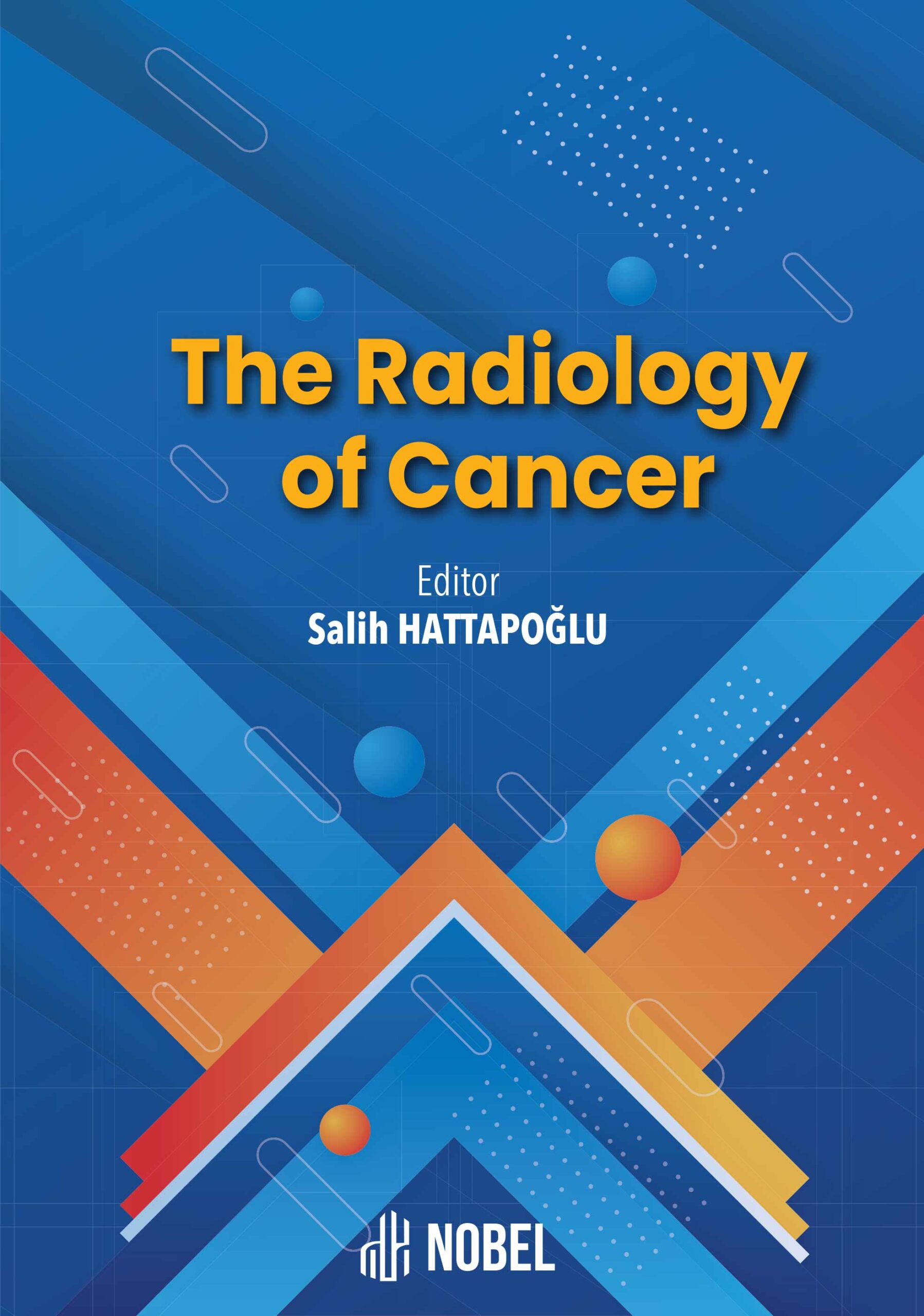Radiological Evaluation of Mediastinal Tumors
Fatma Durmaz (Author)
Release Date: 2024-06-10
Mediastinal tumors represent a rare category of neoplasms, encompassing a wide spectrum of both benign and malignant conditions. The localization of these tumors within specific mediastinal compartments, coupled with the age of the patient, constitutes critical factors in their differential diagnosis. In adults, mediastinal tumors such as thymoma, teratoma, and lymphoma predominantly manifest in the [...]
Media Type
Buy from
Price may vary by retailers
| Work Type | Book Chapter |
|---|---|
| Published in | The Radiology of Cancer |
| First Page | 87 |
| Last Page | 104 |
| DOI | https://doi.org/10.69860/nobel.9786053359364.8 |
| Page Count | 18 |
| Copyright Holder | Nobel Tıp Kitabevleri |
| License | https://nobelpub.com/publish-with-us/copyright-and-licensing |
Fatma Durmaz (Author)
Associate Professor, Van Yuzuncu Yil University
https://orcid.org/0000-0003-3089-7165
3Dr. Fatma Durmaz is an Associate Professor in the Department of Radiology at Van Yuzuncu Yil University Faculty of Medicine. She was born in Van, Turkey. She graduate from Istanbul University faculty of medicine in 2012. She worked as a general practitioner at Van İpekyolu State Hospital from 2012 to 2013. Subsequently, in 2014, she began her residency in Radiology at Van Yüzüncü Yıl University Faculty of Medicine and worked as a resident physician. She completed her specialization in early 2019 and became a specialist doctor. After fulfilling her compulsory service at Hakkari State Hospital, she started working as a faculty member in the Department of Radiology at Van Yüzüncü Yıl University Faculty of Medicine. She continues her tenure at the same institution. She works in the field of cardiothoracic radiological imaging. Throughout her career, she has authored numerous research articles, oral presentations, and poster presentations. Dr. Durmaz is a member of several professional organizations, including the Turkish Society of Radiology, Europian Society of Radiology, The European Society of Cardiovascular Radiology, Turkish Society of Magnetic Resonance.
Hovgaard, H.L.; Nielsen, R.R.; Laursen, C.B.; Frederiksen, C.A.; Juhl-Olsen, P. When appearances deceive: Echocardiographic changes due to common chest pathology. Echocardiography 2018, 35, 1847–1859
Carter, B.W.; Tomiyama, N.; Bhora, F.Y.; de Christenson, M.L.R.; Nakajima, J.; Boiselle, P.M.; Detterbeck, F.C.; Marom, E.M. A modern definition of mediastinal compartments. J. Thorac. Oncol. 2014, 9, S97–S101
Carter BW, Okumura M, Detterbeck FC, Marom EM. Approaching the patient with an anterior mediastinal mass: a guide for radiologists. J Thorac Oncol 2014;9(9 suppl 2):S110–S118.
Rosado-de-Christenson ML, Templeton PA, Moran CA. Mediastinal germ cell tumors: radiologic and pathologic correlation. RadioGraphics 1992;12(5):1013–1030.
Ackman JB. MR imaging of mediastinal masses. Magn Reson Imaging Clin N Am 2015; 23: 141-64.
Carter BW, Benveniste MF, Truong MT, Marom EM. State of the art: MR imaging of thymoma. Magn Reson Imaging Clin N Am 2015; 23: 165-77.
Pokharel SS, Macura KJ, Kamel IR, Zaheer A. Current MR imaging lipid detection techniques for diagnosis of lesions in the abdomen and pelvis. Radiographics 2013;33:681-702
Padhani AR, Koh DM, Collins DJ. Whole-body diffusionweighted MR imaging in cancer: current status and research directions. Radiology 2011;261:700-718
Raptis CA, McWilliams SR, Ratkowski KL, Broncano J, Green DB, Bhalla S. Mediastinal and pleural MR imaging: practical approach for daily practice. RadioGraphics 2018;38:37-55
Shields TW. Primary tumors and cysts of the mediastinum. In: Shields TW (ed). General thoracic surgery. Philadelphia, Pa: Lea & Febiger 1983: 927-54.
Fraser RS, Müller NL, Colman N, Paré PD, eds. The mediastinum. In: Fraser and Paré’s diagnosis of diseases of the chest. 4th ed. Philadelphia, PA: Saunders 1999: 196-234.
Fraser RG, Paré PA, eds. The normal chest. In: Diagnosis of diseases of the chest. 2nd ed. Philadelphia, PA: Saunders, 1977: 1-183.
Felson B. Chest roentgenology. Philadelphia, PA: Saunders, 1973.
Henschke CI, Lee IJ, Wu N, et al. CT screening for lung cancer: prevalence and incidence of mediastinal masses. Radiology 2006;239(2):586–590.
Strollo DC, Rosado de Christenson ML, Jett JR. Primary mediastinal tumors. Part 1*: tumors of the anterior mediastinum. Chest 1997;112:511-522
Jeung MY, Gasser B, Gangi A, et al. Imaging of cystic masses of the mediastinum. RadioGraphics 2002;22(Spec Issue):S79–S93.
Kissin CM, Husband JE, Nicholas D, Eversman W. Benign thymic enlargement in adults after chemotherapy: CT demonstration. Radiology 1987;163(1):67–70.
Inaoka T, Takahashi K, Mineta M, et al. Thymic hyperplasia and thymus gland tumors: Differentiation with chemical shift MR imaging. Radiology 2007; 243: 869-76.
Lichtenberger, J.P., 3rd; Carter, B.W.; Fisher, D.A.; Parker, R.F.; Peterson, P.G. Thymic Epithelial Neoplasms: Radiologic-Pathologic Correlation. Radiol. Clin. N. Am. 2021, 59, 169–182.
Priola, A.M.; Priola, S.M.; Di Franco, M.; Cataldi, A.; Durando, S.; Fava, C. Computed tomography and thymoma: Distinctive findings in invasive and noninvasive thymoma and predictive features of recurrence. Radiol. Med. 2010, 115, 1–21.
Taka, M.; Kobayashi, S.; Mizutomi, K.; Inoue, D.; Takamatsu, S.; Gabata, T.; Matsumoto, I.; Ikeda, H.; Kobayashi, T.; Minato, H.; et al. Diagnostic approach for mediastinal masses with radiopathological correlation. Eur. J. Radiol. 2023, 162, 110767
Zhang, M.L.; Sohani, A.R. Lymphomas of the Mediastinum and Their Differential Diagnosis. Semin. Diagn. Pathol. 2020, 37, 156–165.
Nasseri F, Eftekhari F. Clinical and radiologic review of the normal and abnormal thymus: Pearls and pitfalls. Radio Graphics 2010; 30: 413-28.
Chee DW, Peh WC, Shek TW. Pictorial essay: imaging of peripheral nerve sheath tumours. Can Assoc Radiol J 2011;62:176-182
Omer, A., Engelman, E., & McClain, J. (2018). Mediastinal extension of a pancreatic pseudocyst. Radiology Case Reports, 13(6), 1192-1194.
| onix_3.0::thoth | Thoth ONIX 3.0 |
|---|---|
| onix_3.0::project_muse | Project MUSE ONIX 3.0 |
| onix_3.0::oapen | OAPEN ONIX 3.0 |
| onix_3.0::jstor | JSTOR ONIX 3.0 |
| onix_3.0::google_books | Google Books ONIX 3.0 |
| onix_3.0::overdrive | OverDrive ONIX 3.0 |
| onix_2.1::ebsco_host | EBSCO Host ONIX 2.1 |
| csv::thoth | Thoth CSV |
| json::thoth | Thoth JSON |
| kbart::oclc | OCLC KBART |
| bibtex::thoth | Thoth BibTeX |
| doideposit::crossref | CrossRef DOI deposit |
| onix_2.1::proquest_ebrary | ProQuest Ebrary ONIX 2.1 |
| marc21record::thoth | Thoth MARC 21 Record |
| marc21markup::thoth | Thoth MARC 21 Markup |
| marc21xml::thoth | Thoth MARC 21 XML |

